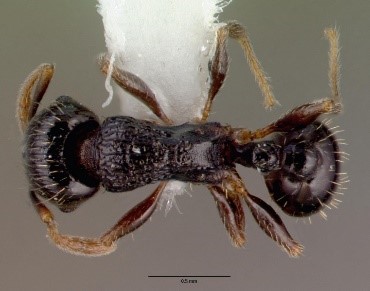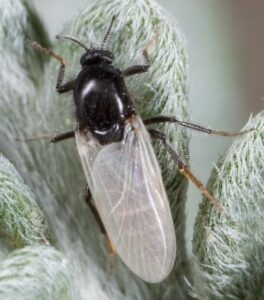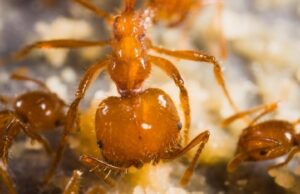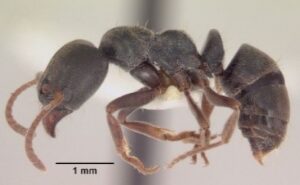Pavement Ant
General Description
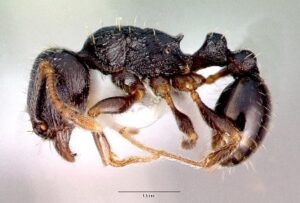 |
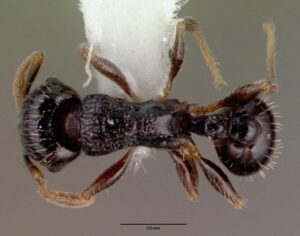
|
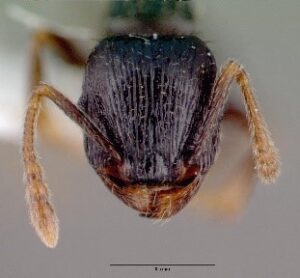 |
- Medium size, adult workers 4 to 4.5 mm long, and the queens are slightly larger
- Black or brown to reddish brown.
- Abdomen shiny. Head and thorax dull
- Twelve-segmented antennae with a three-segmented terminal club.
- Petiole with two nodes.
- One pair of spines on the dorsal side of the thoracic segment adjoining the petiole.
- The propodeum is armed with a pair of spines above, and a pair of flanges below near the insertion of the petiole (waist).
- The tip of the sting has a triangular to pennant-shaped extension projecting upward from the shaft.
- The reproductive members of the colony are winged.
Life Cycle and Common Characteristics
- Pavement ants are one of the most common ant species to invade buildings.
- The stages of pavement ant development include egg, larvae, pupae, and adult.
- Reproductive members generally swarm from the colony in the spring.
- The queen, after mating, burrows underneath the soil and creates a nesting site to lay eggs.
- Workers develop within a period of 2-3 months and begin to care for new eggs and developing larvae.
- Colonies are small to moderate in They may contain 10,000 to 30,000 individuals, including winged reproductive that are present throughout the year.
- Nests are to be found in exposed soil or under stones, rotting logs, in plant stems, or under the
- When pavement ants expand an active nest, they often “dump” debris previously stored in the nest. These “dumps” contain a variety of materials, including seed coats, sand, insect parts, and sawdust.
- Pavement ants are most active at night.
- They forage within 3 meters of their nest
- They often nest in the soil under rocks or paved surfaces, including sidewalks, driveways, and building slabs. Therefore, they derive their name from their habits in these areas.
- Once inside the building or home, they forage along walls, baseboards, or beneath carpeting. They use pheromone trails, often beneath baseboards or in other protected areas. They follow pipes or conduit lines to move from one room or floor to another.
Damages and Economic & Medical Implications
- Pavement ants are often considered invaders of homes because sidewalks, walkways, and patios make ideal habitats for these
- This species has been known to feed on a variety of foodstuffs in houses
- It is considered to be a minor urban nuisance ants entering houses and nesting in
- It is capable of

